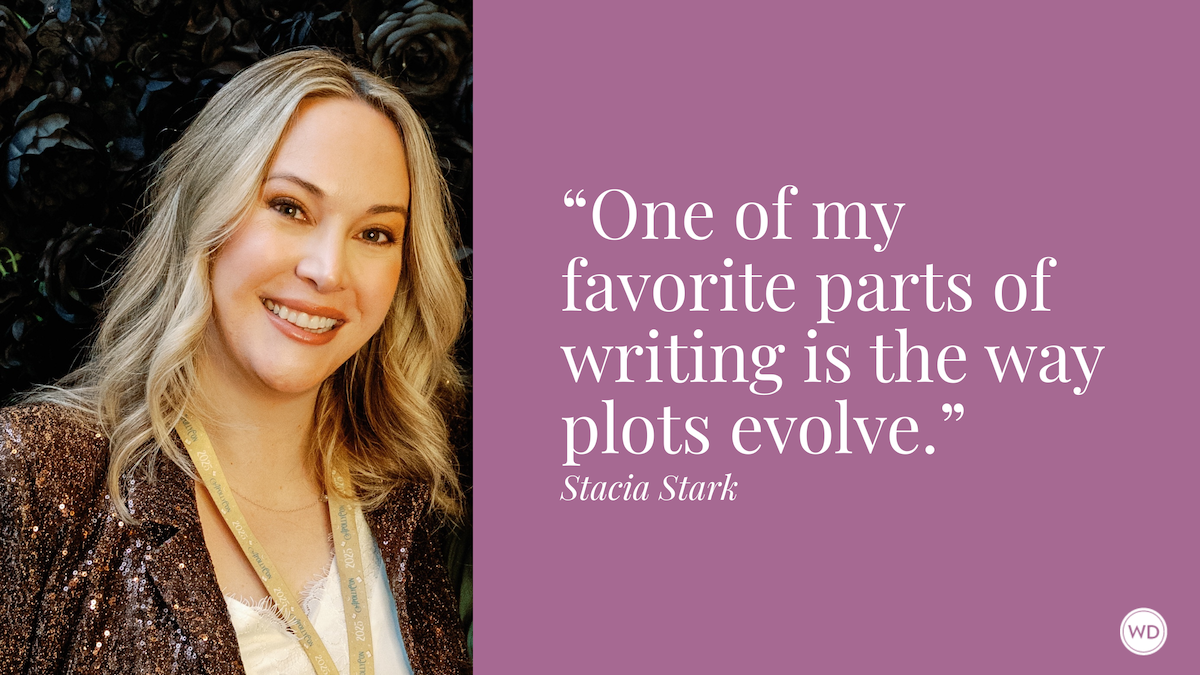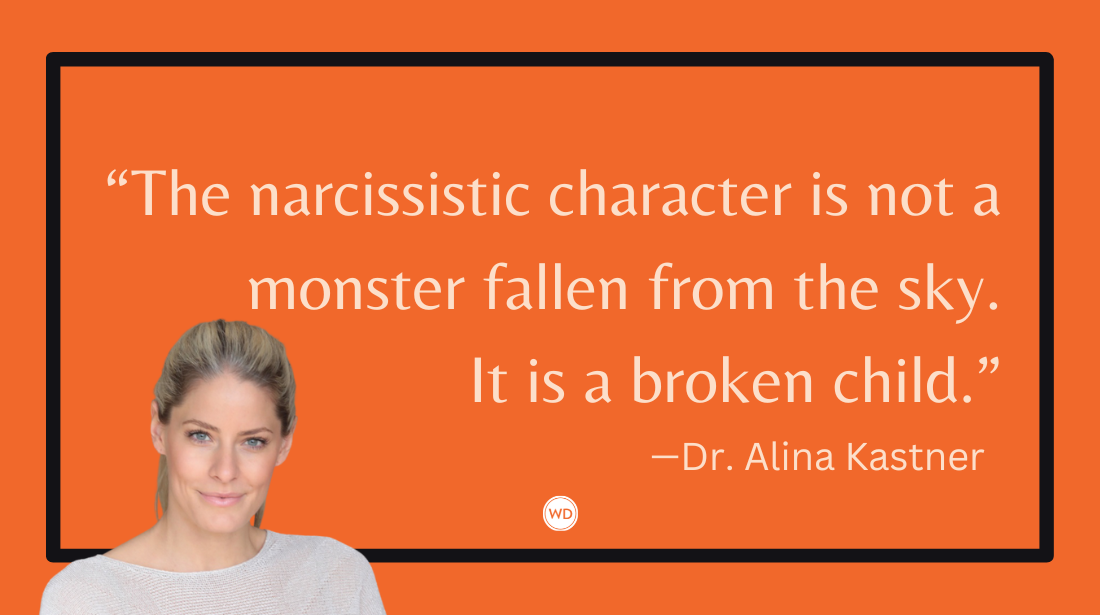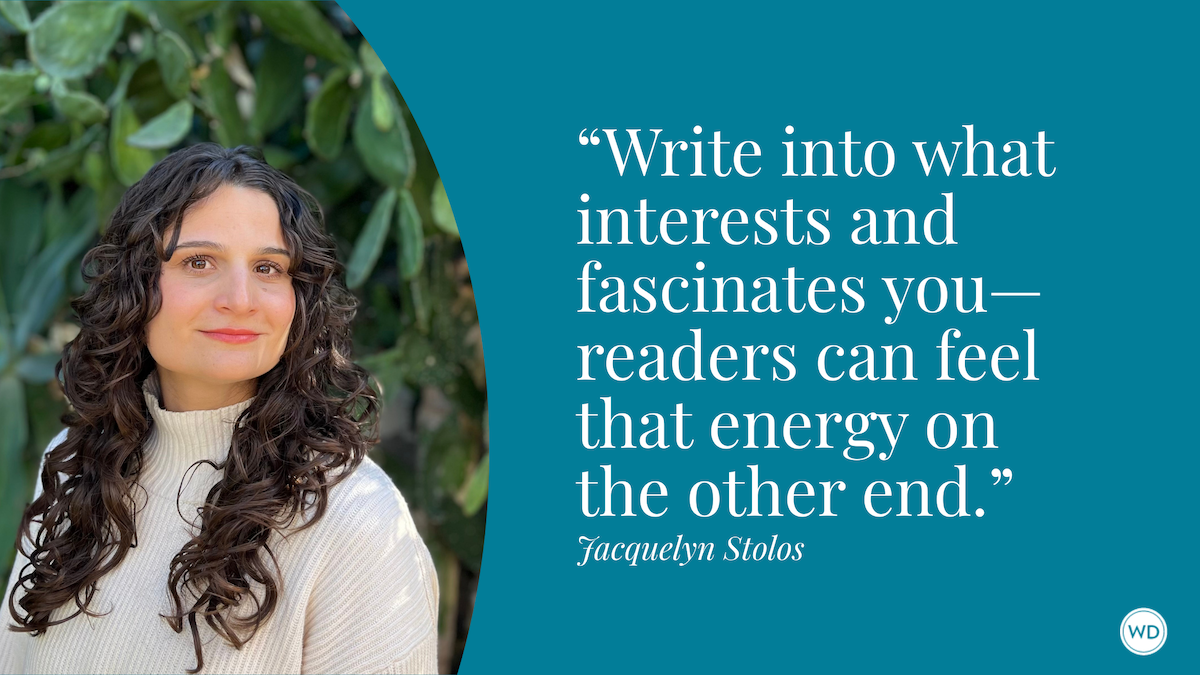How to Write Scientific Fiction: Analyzing Carl Sagan’s “Contact”
Dustin Grinnell explains how to—and how not to—write more scientific fiction by analyzing Carl Sagan’s “Contact” and the ways it incorporates believable elements that are understandable to laypeople.
Carl Sagan was many things: astronomer, cosmologist, television personality, writer, and science communicator. He was perhaps most famous for his popularization of science and inspiring a generation of young scientists. A romantic and a passionate commenter on science, technology, theology, and philosophy, Sagan was a true Renaissance man. Above all, he was a storyteller.
Sagan used many mediums to tell his stories, but his only use of fiction was in Contact (1985). Perhaps he turned to fiction, because he thought he wouldn’t able to fully capture his thoughts and feelings about science and religion—about humanity’s place in the cosmos—in a documentary, television program, article, or nonfiction book. Perhaps the novel was the only medium through which he could express what he really wanted to say. What he needed to say.
Whatever the reason, Sagan probably concluded that television wouldn’t cut it. Indeed, Sagan shows his cards through Contact’s protagonist, an astronomer named Eleanor “Ellie” Arroway. Scrolling through television channels, “Ellie ignored the random excess and advanced sequentially through the television stations. Lifestyles of the Mass Murderers and You Bet Your Ass were on adjacent channels. It was clear at a glance that the promise of the medium remained unfulfilled.”
As Sagan describes the nature of the cosmos, you can almost hear his voice—that romantic, deep tone that’s hard to forget after watching the television show Cosmos. Sagan isn’t only an explainer of science or an entertainer, he’s an enchanter. As such, his only work of fiction is a perfect laboratory for understanding how to blend fact and fiction.
The imagination of the author
Open Contact to a random page and Sagan’s powers of imagination become clear. Some writers believe that imagination is the only unteachable aspect of writing. Tony Gilroy, a screenwriter who wrote such films as The Bourne Identity and Michael Clayton, said, “I don’t think you can teach imagination.”
If there’s an imagination gene, Sagan was born with it. The premise of Contact alone is highly imaginative. It is about the receipt of a radio transmission from an extraterrestrial intelligence. After decrypting the complex message, humans build a machine that will bring the machine’s passengers to a meeting with an advanced species. Less a work of science fiction, Contact is speculative fiction. “Science fiction has monsters and spaceships; speculative fiction could really happen,” author Margaret Atwood told The Guardian in a 2003 profile about her.
Throughout the book, Sagan displays his aptitude for speculation. He speculates about what an extraterrestrial civilization might be like. “An extraterrestrial might be different from humans in every way. They would probably sympathize with how unadvanced we were. How we were just beginning to stand up on our two feet.” The chemistry, lifespans, civilizations of an advanced species might be completely different from life on our planet.
The use of literary devices
At the beginning of Contact, Sagan deploys short, italicized paragraphs to describe the journey of radio waves as they travel to Earth from the star system Vega. He describes this radio transmission poetically. “The pulses had been journeying for years through the great dark between the stars.” The reader senses this signal will reach Earth. As the radio waves journey through space, Sagan introduces the reader to the story’s protagonist, Eleanor Arroway.
Using the omniscient point of view, Sagan begins with Ellie’s birth; we see her fall in love with science in school, become a radio astronomer after graduate school, and then take over the command of a large array of radio telescopes, as part of the Search for Extraterrestrial Intelligence (SETI).
By describing these two parallel narratives—the radio signal and Ellie’s maturation—Sagan sets up a splendid collision course. Anyone with a radio telescope could detect signal, but the readers expect that Ellie will be there first. This device generates anticipation and excitement.
The protagonist
Most of the novel is told through the perspective of Ellie via third-person limited, but Sagan opens the book with an omniscient narrator. It seems like an odd place to begin, a “cradle to grave” approach, but Sagan uses the early encounter to characterize Ellie: Her first expression after being born was “puzzlement.” Sagan takes us through Ellie’s childhood to adolescence and then into adulthood, building Ellie’s character, showing the reader she is driven, intelligent, and intensely curious.
In his early attempts to build Ellie’s character, Sagan writes from the perspective of a child. “Life was better up here [on her father’s shoulders], far safer than crawling through a forest of legs. Somebody could step on you down there.” With each individual scene, we get more examples of Ellie’s specialness using colorful events that show, not tell. Ellie began reading at age three; later, she dismantled a radio to study its inner workings and diagnose and fix a mechanical problem. Then she discovers the immense sky and all its wonders. Observing space and other wondrous celestial events through the perspective of a child gives the observations a whimsical quality. Seeing the world through Ellie’s maturing eyes generates a sense of wonder. For Sagan, this was no doubt deliberate.
Sagan uses scene breaks and new chapters to progress through large chunks of time. Before the end of the second chapter, Ellie is contemplating a possible new direction in her career; her former doctoral advisor has piqued her curiosity about SETI. She learns about a cluster of radio satellites that could be used in the search for extraterrestrials. Ellie wonders, then … chapter end. At the start of chapter three, Sagan leaps many years ahead and opens the next chapter with the omniscient narrator, describing “Ellie as a woman in her thirties with long dark hair casually dressed in a knit T-shirt and khaki skirt. She enters a door marked E. Arroway, Director.” Sagan wisely skipped the parts of the story that might have bored readers. He gave us only what was relevant to build character or advance the plot.
Are the author and reader in agreement?
At this point in the book, the reader has a certain sense of Ellie. They’ve made some evaluations, some judgments. Are these positive or negative, or is the reader ambivalent? It’s important to ask whether the reader’s feelings toward Ellie agree with how the author may have intended. From my perspective, the answer is yes. The perceptions that Sagan and the reader have about Eleanor Arroway are in alignment. If Sagan and the readers disagreed, the book might have failed.
The reader sees Ellie as Sagan likely intended: she’s good-hearted, highly intelligent, and driven, but also sharp-tongued, stubborn, and sometimes impetuous. There’s never any subtext that Ellie might be something other than what Sagan likely hoped. Ellie’s fascination with extraterrestrial intelligence grows: “someday, she mused, there might in fact and not just in fantasy be a message received by one of the great radio telescopes.” The reader knows what Ellie wants. Her goals are romantic and lofty, and she works tirelessly without recognition for many years because she knows that if she receives a message from the heavens it would be the greatest discovery of mankind. It will also enlarge man’s view of its place in the cosmos.
Sagan also shows Ellie as profoundly idealistic. As the world united to build a machine that would send humans to an extraterrestrial civilization, Sagan participates in some idealism: “We are all humans. This was a phrase you heard often these days. The existence of the Message was binding up the world.”
Exposition: Sagan’s Achilles heel
Not an experienced fiction writer, Sagan does stumble with one element of the craft. As a brilliant narrator in his nonfiction, Sagan summarizes a lot of information in his fiction, rather than dramatizing it. For example, he narrates Ellie marveling at the notion of radio astronomy. Then he summarizes: She visited a radio telescope near Harvard, MA, then accepted an internship, then began listening to a galaxy. Then he explains her thoughts: That she found the occasional rewards of the role agreeable. She graduated from Harvard then went to California for graduate work. He doesn’t show this; he tells us. He doesn’t dramatize it with vivid scenes and dialogue.
Sagan’s information dumping interrupts the story’s progress. For the reader, they are a poke in the eye. For example, when the radio astronomers detect an unknown signal they assume it’s from the Air Force. As a reader, we might have liked to see the characters busily disqualify all the possibilities as they evaluate the signal. Instead, Sagan spends several passages talking about how the military frequently produced false positives.
This is perhaps the easiest trap to stumble into in a fictional story that deploys large amounts of scientific information. The author knows the science may add gravitas to the story, but he or she must be careful not to slow down its speed. It’s a balance. Exposition mustn’t be dumped but metered out in digestible bits through background, flashbacks, dialogue, and dynamic, vivid scenes with action.
Sagan likely knew this. He probably just couldn’t help himself and wanted to talk about science, politics, religion, and humans as a species. As such, he uses tricks to make dense information more palatable. At the beginning of a vignette, when the reader is perhaps conditioned to tolerate more exposition than usual, Sagan may dump character background or scientific information, almost in the form of a lecture. For example, he uses several paragraphs to explain a one-year relationship that Ellie had, a charming affair about young love. Eventually, the boy, Jesse, wanted a child, but Ellie refused to leave school. They broke up. Then Sagan tells the reader about Venus—its greenhouse effects and astronomers’ study of the planets—and within the same opening paragraph, subtly transitions into Ellie’s POV. “Ellie longed for some explanation and tried unsuccessfully to imagine ways in which the radio emission could come from high above a clement Venus surface.”
It was the English scientist J. B. S. Haldane who wrote in a 1930 article, “How to Write a Popular Scientific Article,” which was later republished in What I Require from Life: Writings on Science and Life from J. B. S. Haldane, that “you are not writing to show off nor are you aiming at such accuracy that your readers will be able to carry out some operation. You want to interest or even excite them, but not give them complete information.”
This is where Sagan goes astray. He gives the reader too much information in many places. In fact, way too much. One place it does work well is in Sagan’s description of the number pi in the beginning of the novel. He makes the exposition palpable by showing Ellie’s visit to the library and her reading about pi. He shows Ellie in class asking her teacher why pi goes on forever and shows the teacher saying that that is a stupid question. Here, Sagan addresses the concept of pi through a dynamic scene with willful characters.
Exposition gone bad with characters
Sagan’s “telling not showing” extends into his characters too. He often writes long passages about characters from a zoomed-out perspective, dumping background about someone into the action of the story. When we first meet the priest Palmer Joss on television, Sagan starts off by describing the character well: “Like most Americans, Ellie instantly recognized his resonant voice, his slightly unkempt good looks and the discoloration beneath his eyes that made you think he never slept for worrying about the rest of us.” A man of the cloth, of faith, a believer, Joss is skeptical of science and its practitioners. Joss’s character is a means to counterpoint Ellie’s scientific fervor and inability to cultivate faith—to believe without proof—and he works well in this function.
However, Sagan uses the omniscient voice to dump Palmer’s backstory in after his introduction. He recounts the event in which Palmer was struck by lightning, a time when he left his body and saw God. While the use of exposition might be a bit clunky, it’s a wonderful use of flashback—an event with great meaning to the character that lets the reader know how this character ticks. In the scene, Joss dies to his flesh and is reborn a man of spirit.
Sagan builds a possible relationship between Joss and Ellie slowly (though never ultimately creating a union). Joss is an unlikely love interest for Ellie, a scientist, but as her interest in the holy man grows, she finds it appealing that “he knows a bit about her world and has some obscure pieces of scientific knowledge at his fingertips.” Ellie notices that “he had a most attractive smile.” They are both seekers of truth, albeit in different ways. Joss admires Ellie’s brilliance, passion, and relentless curiosity. Ellie admires his openness to religious experience.
The antidote to information dumps: Avoid boring subjects
While the use of exposition is perhaps Sagan’s weakness, the book works wonderfully. How does Sagan get away with the “sin” of info dumps? One reason is that these information dumps occur around characters that we are committed to following, namely Ellie. We’re invested in the story’s protagonist. Ellie is sympathetic, likable; she knows what she wants, and she’s going after it with gusto.
Perhaps the biggest reason we tolerate Sagan’s information dumping is that the information is interesting. The information Sagan works with sparks our curiosity, and we’re learning something as we read. It doesn’t matter if he’s writing about science, a character’s background, philosophy, politics, or theology; he rarely bores the reader.
Perhaps this is because he’s writing about his great passion: the cosmos (and our place in it). He’s playing with potent and heady philosophical questions: Are we alone in the universe? What would happen if we had neighbors? What would happen if we all met? We turn pages, sometimes wading through dense jungles of exposition, to satisfy our curiosity. To learn. To possibly discover answers to questions we’ve asked as a species since the dawn of humanity.
In a chapter concerning writing about science and technology, William Zinsser notes in On Writing Well that great writers of science deploy a “sequential style, leading the reader through logical steps, one sentence after another, along the path of the story he has set out to tell.” Sagan does this with facility, but Zinsser adds that the best is “also enjoying himself and therefore writing enjoyably.”
Writing where you hang your hat
Sagan is an astronomer, cosmologist, astrophysicist, and astrobiologist who writes about an astronomer discovering a message from an extraterrestrial species. This is Sagan’s wheelhouse. He’s comfortable. As he created moments in Ellie’s childhood, it wouldn’t surprise me if Sagan was drawing from personal experiences. Like Ellie, Sagan no doubt pestered his own teachers with questions about pi and how we knew the decimals went on forever.
It’s been said that Ellie’s character was based on the female astronomer Vera Rubin. The use of radio astronomy to study Venus was Rubin’s research. In Contact, “they were trying to measure how the number of distant extragalactic radio sources increased as they looked deeper into space. She [Ellie] began to think about better ways of detecting faint radio signals.” No doubt, Vera was motivated by the same thought.
Contact is an example of an author writing where he or she hangs his or her hat, so to speak. A man of science, Sagan writes fluently about astronomy and the cosmos. He’s devoted his life to the pursuit of truth using the scientific method, and this passion is clear in his prose. As an author, he’s engaged, so we’re engaged as readers. Indeed, whose imagination isn’t captured by images from the Hubble telescope? The incompressible distances, the spectacular violence of explosions, warped space, effects happening before causes within the bowels of a supermassive black hole, and the birth of stars in nebulae light-years in length. It’s deliciously fascinating material.
How to make complex science accessible to lay readers
With any work of popular fiction, the author’s audience is the layman. The author has the great challenge of having to get a general audience to understand complex ideas. Zinsser says, “The writer of science must remind themselves that the reader knows nothing. You can’t assume that your readers know what you assume everybody knows, or that they still remember what was once explained to them.”
Zinsser notes that Rachel Carson, the environmental activist and author of Silent Spring, wasn’t a writer in his mind. “She was a marine biologist who wrote well. She wrote well because she was a clear thinker and had a passion for her subject.” Zinsser says that great writers of science, such as Carson and Oliver Sacks (The Man Who Mistook His Wife for a Hat), all wrote in a linear style, avoided technical jargon, and constantly related arcane processes to something readers could visualize.
A classic trick of many science writers is to get an expert to explain difficult-to-understand material as they would to their grandmother. Sagan does this in several places. For example, when the president’s science advisor, a biologist by training, asks Ellie to explain the nature of the radio signal, the science advisor says, “I may be the President’s science advisor, but I’m only a biologist. So please explain it to me slowly.” The reader was hoping for this humility. A naïve character is a lay reader’s dream.
Throughout the story, as if it were second nature, Sagan also uses nontechnical language to describe complex scientific theories. The following from Zinsser could have been written by Sagan himself: “I’ve learned that scientific and technical material can be made accessible to the layman. It’s just a matter of putting one sentence after another. The ‘after,’ however, is crucial. Nowhere else must you work so hard to write sentences that form a linear sequence.”
Another trick Sagan uses to illustrate complex ideas is analogy. Ellie is intrigued by SETI but wonders if the endeavor is futile. The universe is too big, she thinks. Perhaps extraterrestrials are out there, but they are too far away. Maybe they just don’t care. Intellectually, the reader understands these ideas, but the point is driven home when Ellie likens an alien species to ants. “They occupy the same landscape that we do. They have plenty to do, things to occupy themselves. On some level they’re very aware of their environment. But we don’t try to communicate with them. So, I don’t think they have the foggiest notion that we exist.”
With such technical material, it’s also important to check one’s facts. Many readers of technology-thrillers and science fiction are educated and sophisticated, and they will object to any inaccuracy in a story. In the author’s note of Contact, Sagan writes that he enlisted several scientific experts to review early drafts. One expert was the astronomer Kip Thorne, who created fifty lines of equations to explain the galactic metro system that Ellie and four other explorers traveled through in the story. (It’s worth noting that Kip Thorne seems to enjoy this work, as he also consulted on the movie Interstellar, written and directed by Christopher Nolan.)
A gift for the future
Zinsser says the mystery can be taken out of scientific material by getting the reader to identify with the scientific work being done. To do this, he urges the writer to look for the human element, which may include oneself. “Even in the midst of high technology the writer never loses the human ingredient. This isn’t a story about ‘science’; it’s a story about people doing science.”
According to Zinsser, great writers of science “come across first as people: men and women finding a common thread of humanity between themselves and their specialty and their readers.” “Only through clear writing by experts can the rest of us make educated choices as citizens in these areas where we have little or no education.”
Sagan didn’t seem to write about science for the “fun of it” (although he likely had great fun in the process). Rather, Sagan likely had an aim with Contact. An idealistic purpose. Given the hundreds of billions of galaxies in our vast universe, it seems probable that life exists elsewhere, and even if it’s only millennia from now, humans will likely make “contact.” When that time comes, Sagan’s book could serve as an instruction booklet during that likely disorienting phase of human history.
Dustin Grinnell is a writer based in Boston. He's penned everything from short stories to scripts, from scientific articles to sci-fi novels, and has been published in the world’s top media outlets. These outlets include the Washington Post, Salon, VICE, the LA Review of Books, Writer's Digest, the Boston Globe, and the New Scientist. Along the way, he's won a variety of awards, been featured in international exhibitions, and taught workshops. Learn more at dustingrinnell.com.









